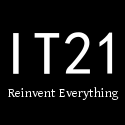Deadly High Blood Pressure: Reasons, Symptoms, and Treatment
Malignant hypertension, additionally called hypertensive emergency, is a serious problem defined by a quick and harmful increase in blood pressure. This medical emergency situation requires instant focus and treatment to stop possible body organ damage and lethal difficulties. In this write-up, we will certainly explore the causes, symptoms, and treatment options for malignant hypertension.
Causes of Deadly Hypertension
Malignant hypertension typically takes place in individuals with pre-existing hypertension. However, it can also develop all of a sudden in people with previously normal high blood pressure levels. The specific sources of malignant high blood pressure are not fully recognized, but numerous variables may add to its development.
An unchecked increase in blood pressure may arise from various hidden conditions, such as:
- Kidney illness: Particular kidney disorders, such as kidney artery constriction or glomerulonephritis, can lead to the advancement of malignant hypertension.
- Adrenal gland problems: Adrenal lumps or disorders, like pheochromocytoma or Cushing’s syndrome, can create elevated high blood pressure degrees.
- Drug abuse: Using illegal substances like cocaine or amphetamines can set off an unexpected and serious boost in blood pressure, bring about malignant hypertension.
- Medicine non-compliance: Failure to take recommended high blood pressure medicines as routed can add to unchecked high blood pressure and the development of malignant high blood pressure.
- Various other aspects: Specific medical problems, such as pregnancy-related high blood pressure (preeclampsia) or autoimmune conditions like systemic lupus erythematosus, can enhance the danger of deadly high blood pressure.
Signs of Deadly High Blood Pressure
Deadly high blood pressure usually presents with a series of signs and symptoms that require immediate clinical interest. These signs and symptoms might include:
- Serious frustration
- Lightheadedness or faintness
- Blurred vision or changes in vision
- Upper body discomfort or pain
- Lack of breath
- Nausea or throwing up
- Seizures
- Confusion or transformed psychological state
If you or a person you recognize experiences these signs, it is vital to look for prompt healthcare. Deadly hypertension can result in deadly problems, such as stroke, cardiac arrest, kidney failure, or lung edema.
Treatment of Deadly High Blood Pressure
Malignant high blood pressure is a clinical emergency situation that calls for timely treatment. The primary objective of therapy is to lower high blood pressure levels rapidly and maintain the condition to prevent organ damage.
Therapy options for deadly hypertension might consist of:
- Intravenous medications: Drugs carried out through a vein can swiftly minimize blood pressure degrees in hypertensive emergency situations. Examples include nitroglycerin, labetalol, or sodium nitroprusside.
- Hospitalization: The majority of cases of malignant hypertension need health center admission for close monitoring and extensive treatment. This enables healthcare experts to make sure blood pressure degrees are appropriately taken care of and to deal with any type of complications that might develop.
- Dental drugs: As soon as high blood pressure is supported, oral medicines may be suggested to control high blood pressure in the long-term. These may consist of diuretics, calcium network blockers, angiotensin-converting enzyme (ACE) preventions, or beta-blockers.
- Treatment of hidden conditions: If malignant high blood pressure is caused by an underlying clinical condition, such as kidney illness or adrenal gland issues, dealing with and managing these problems are important for long-term high blood pressure control.
Prevention and Administration of Malignant Hypertension
Protecting against deadly high blood pressure includes successfully taking care of and regulating high blood pressure degrees. Some pointers to prevent or handle hypertension include:
- Normal high blood pressure monitoring
- Taking suggested medicines as routed
- Following a healthy and balanced diet regimen, reduced in sodium and rich in fruits, veggies, and entire grains
- Keeping a healthy weight
- Taking part in regular exercise
- Avoiding too much alcohol usage
- Staying clear of cigarette use
- Handling tension through relaxation methods, such as meditation or yoga exercise
It is necessary to talk to a medical care expert to develop a personalized plan for high blood pressure management and prevention.
Finally
Deadly hypertension is a severe problem defined by a quick and harmful rise in blood pressure. It requires immediate medical attention to stop prospective organ damages and deadly difficulties. Understanding the causes, acknowledging the symptoms, and seeking prompt therapy are essential for managing this medical emergency situation properly. By controlling blood pressure degrees through medication, lifestyle adjustments, and normal tracking, individuals can lessen the risk of precio bihecol creating deadly hypertension and its connected issues.
